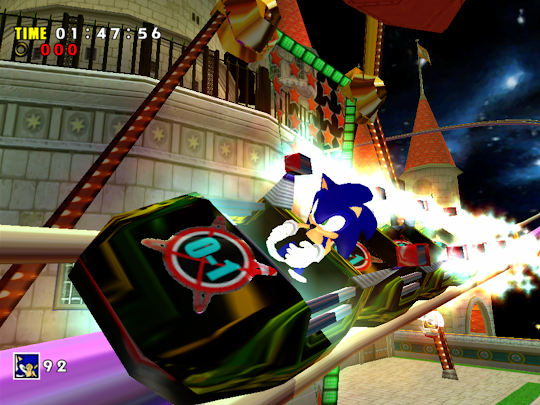Parles-tu français? No, me neither. Languages weren't a strength of mine at school, and despite some derisory attempts to pick up Spanish during adulthood, I remain a stereotypically monolingual Brit. Nevertheless, last year I took up the task of acquiring and scanning a whole heap of Dreamcast magazines from across the globe that had yet to be digitally preserved. A handful of those missing from the internet are in English, but the vast majority are in the Romance languages of my European neighbours, Japanese and even varieties of Chinese.
Why on earth would I bother doing this? Well, for one, I'm hopeful that the pages of these mags might contain some information that is useful to hobbyists, journos and potentially even the more rigorous varieties of gaming historians.
 |
| Fortunately the Junkyard crew's attitudes towards our French neighbours are much more comradely than that shown in this Dreamarena chat snippet... |
Secondly, it seemed a shame that masses of material was only available to those who were fortunate enough to hold private collections. And lastly, given that there is no profit to be made from it, it was unlikely that digital preservation of this sort was going to happen unless I (or other volunteers) took it up. Oh, and the biggest reason of all - I'm a big dork and get a kick out of dorky endeavours.
Ok, enough with the prelude and on to the main event. The primary purpose of this post is to announce that the first 15 issues of the French magazine Dreamzone are now available for your viewing pleasure, hosted by the virtual Aladdin's cave that is Sega Retro. That is, over 2,000 pages of retro gaming journalism, brought back to life kicking and screaming from the dark depths of the turn of the Millennium.
Feel free to browse the scans for yourself, or, for an introduction to the magazine and a run-down of its contents, read-on.
Launched by the prolific FJM Publications in December of 1998, Dreamzone was the first magazine of its ilk to appear in Europe. Understandably enthused by the Japanese launch, their early start meant that the first few issues of the mag were dominated by salivating previews and reviews of exotic Japanese imports, as well as extensive pondering over what the coming European launch may entail. Once the wait was over in late 1999 a substantial proportion of the page budget was duly turned over to a PAL-specific focus, though coverage of the many, many Japanese releases still remained a mainstay until the bitter end.
 |
| The FJM Publication team circa 2000, featuring two chaps who took up the Editor-in-Chief role for Dreamzone: Vincent Maulon (issues 7-15) and Cedric Devoyon (issues 16-29). |
Dreamzone featured everything you might expect from a magazine of its genre and age: a copious letters section, interviews with game industry heads, reporting from events, boisterous editorials, competitions, game tips, reviews and previews, and of course, crass slobbering over a digital Lara Croft. What was perhaps a little more odd was their persistent coverage of the Neo Geo Pocket - seemingly adopted as an unofficial companion for the Dreamcast, perhaps in spite of the console war rivals over at Nintendo. Looking at it through the lens of 2024, the haphazard reporting on movies and websites that filled the back end of the mag seems rather twee too, but may well have added some value for readers at a time when internet access was limited.
 |
| "I'm not BOY". Vive la Neo Geo Pocket! |
Despite lacking the GD-ROM giveaway of its official competitor, Dreamzone still packed a lot of bang for it's buck (or Franc to be more precise), coming in at 132 pages per issue on average. And, from what can be established through some rudimentary internet sleuthing, the mag appears to be fondly remembered by many a French millennial - more so than its other national competitor, Game Dream, which was bizarrely ran by the same publishing house. Whether Dreamzone ever actually made it to the shores of distant Francophone territories mentioned in the small print of its cover (Martinique, Guadeloupe, Quebec) is a question for another day...







































